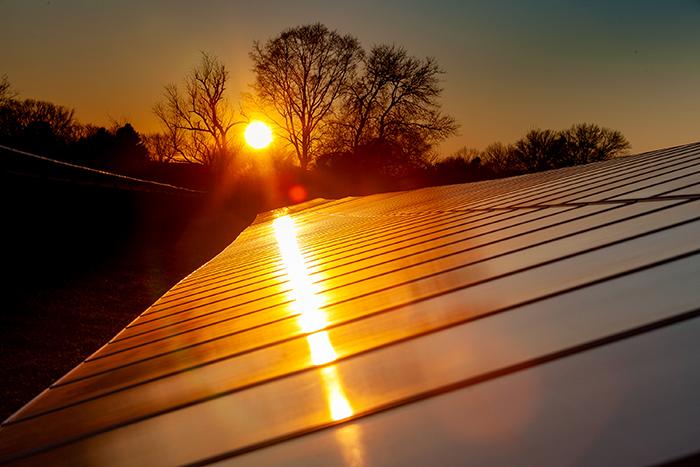Dickinson Joins Large-Scale Solar Project, Supporting Commitment to Sustainability

Dickinson College's solar array. Photo by Carl Socolow '77.
Dickinson Joins Solar Power Purchase Agreement
Dickinson and eight other colleges and universities in North Carolina and Pennsylvania are joining forces to bring an innovative, large-scale solar facility online in western Kentucky. By collaborating on this Power Purchase Agreement (PPA), Davidson College, Dickinson College, Elon University, Haverford College, Lafayette College, Lehigh University, Muhlenberg College, Swarthmore College and Wake Forest University are accessing the benefits of renewable energy through a deal typically only feasible for large customers.
“It’s really exciting to be a part of this project,” says Ken Shultes '89, associate vice president for sustainability and facilities planning at Dickinson. “When combining this project with our 3-megawatt (MW) Solar Field, we are mitigating 100% of our Scope 2 carbon emissions.”
Guided by Coho, an ERM Group Company, the institutions are working with NextEra Energy Resources, the world’s largest generator of renewable energy from the wind and sun, and a world leader in battery energy storage. The consortium is supporting the Sebree Solar II project through a PPA that entails purchasing energy for 20 years. The Sebree Solar II project is set to begin construction in early 2025 and commence commercial operation by the end of 2026. The solar site is projected to provide enough energy to annually power more than 24,000 homes when complete.
The solar facility will be located near the town of Robards, Kentucky, near the Ohio River. The Sebree Solar II project will offer considerable environmental benefits as the project will generate up to 150 MW of clean, renewable energy. Over its 30-year lifespan, the solar site will contribute approximately $12 million in additional tax revenue to Henderson County which can be used for roads, schools and other public services.
While electricity generated by the Sebree Solar II project cannot be transmitted directly to the consortium campuses because of distance, the benefits of investing in new additional renewable energy will still be transferred to the schools. Dickinson will be paying for an amount of energy equal to approximately 75% percent of the electricity used by its campus, with the remainder being satisfied by the college’s 3 MW Solar Field. In exchange, Dickinson will receive renewable energy credits, which can be used to account for greenhouse gas emissions related to purchased electricity.
Notably, Dickinson was one of the first 10 colleges in the country to achieve neutrality. Moving forward, its focus is on reducing reliance on offsets, and more generally to continue to introduce operational sustainability initiatives as learning opportunities for students. Dickinson will receive access to data from the Sebree Solar II project for classroom use, as well as campus speaking engagements, site visits and student internships.
“We are pleased to work with Dickinson and the other institutions to help them achieve their sustainability goals,” said Anthony Pedroni, vice president, renewable development and M&A NextEra Energy Resources. “This solar energy project will generate homegrown energy and provide millions of dollars in additional tax revenue to Henderson County over the life of the project.”
TAKE THE NEXT STEPS
Published April 23, 2024